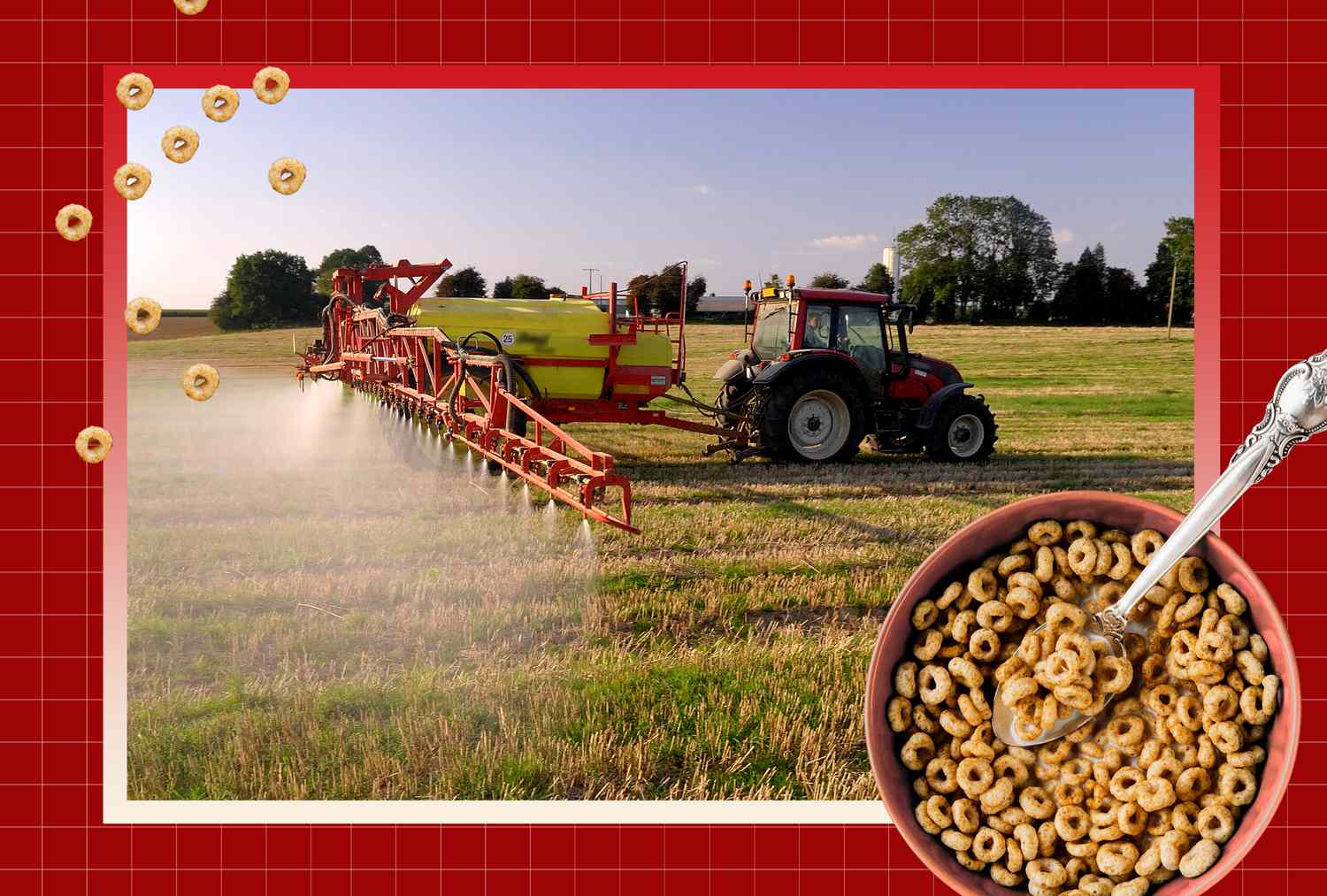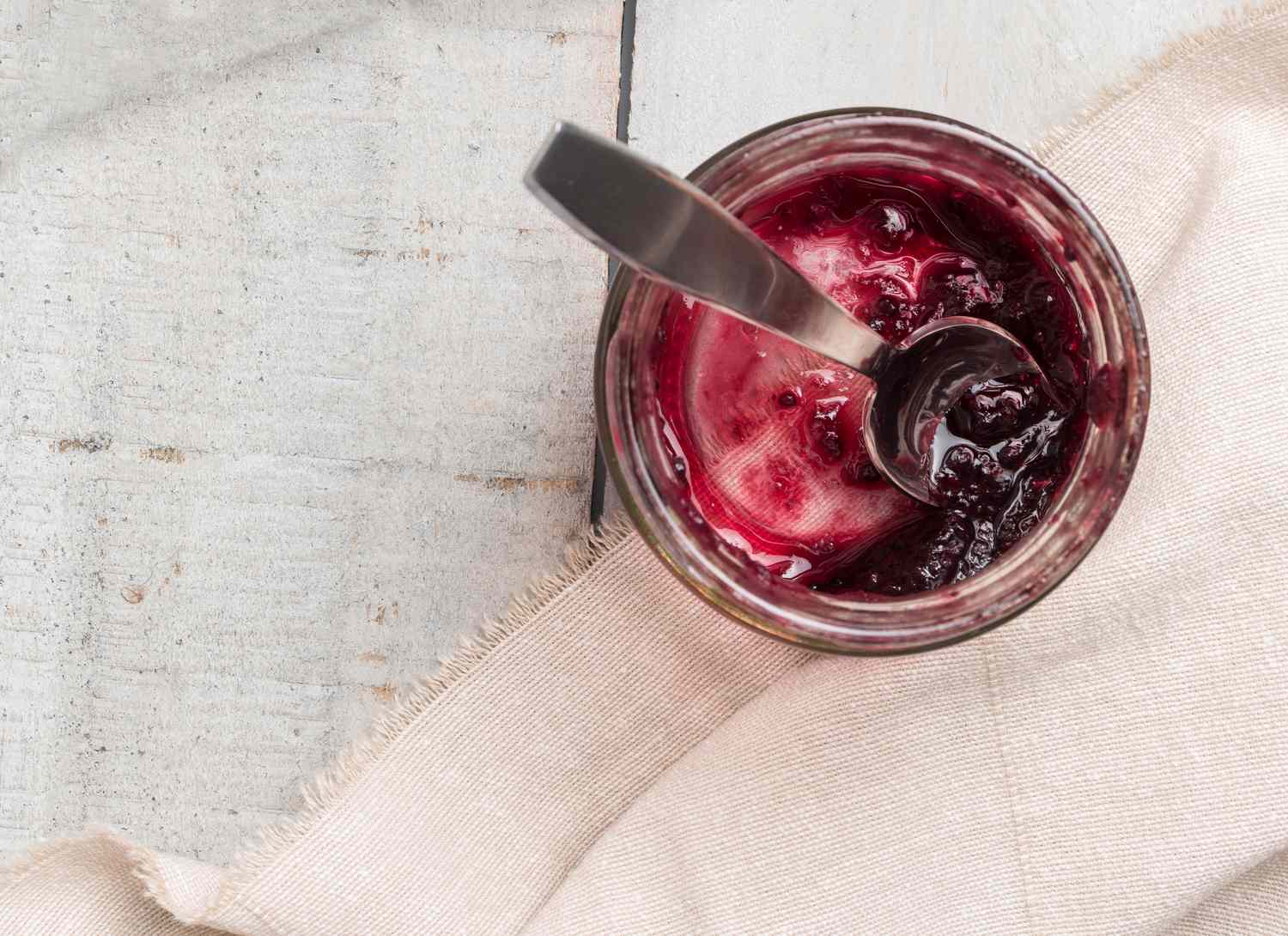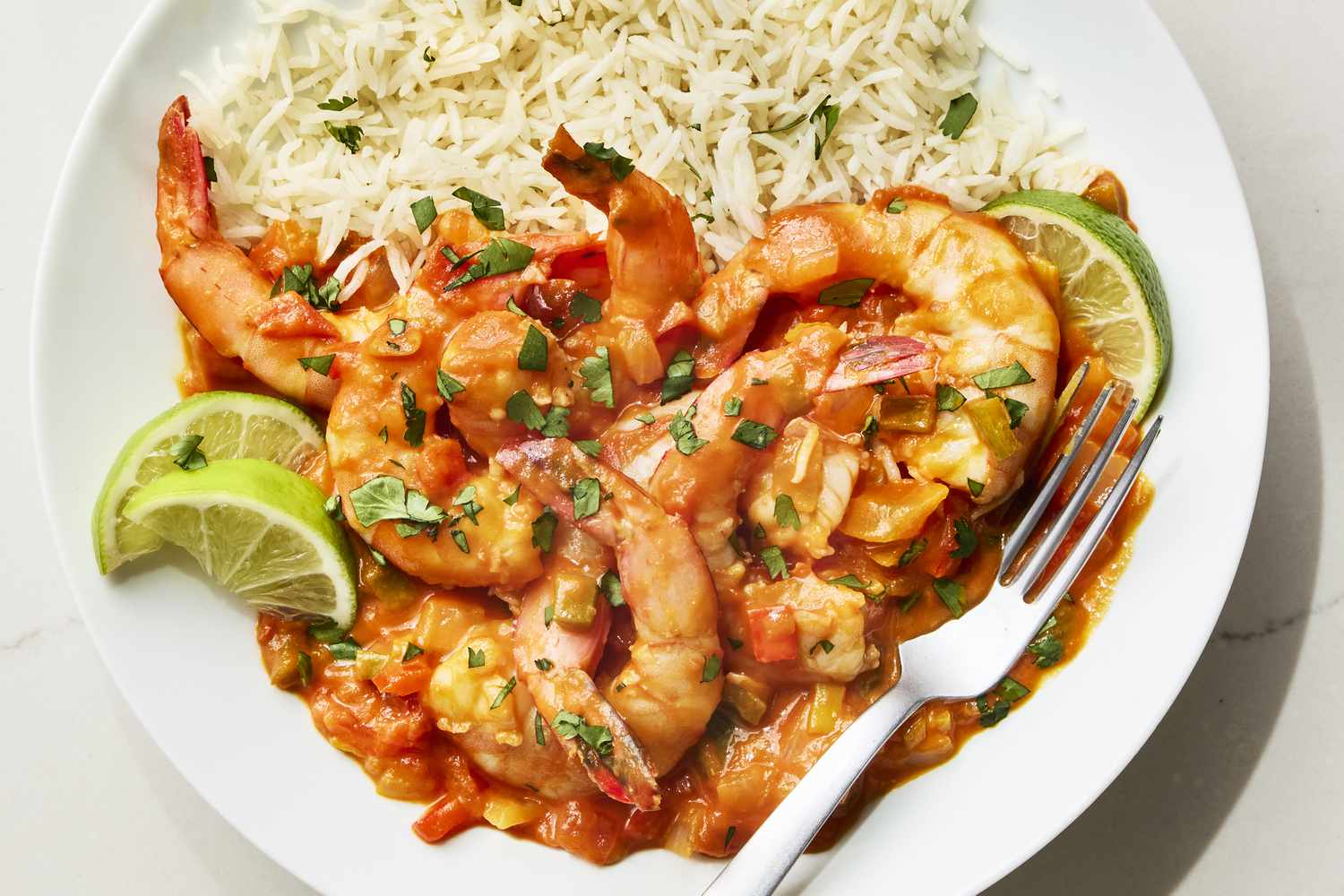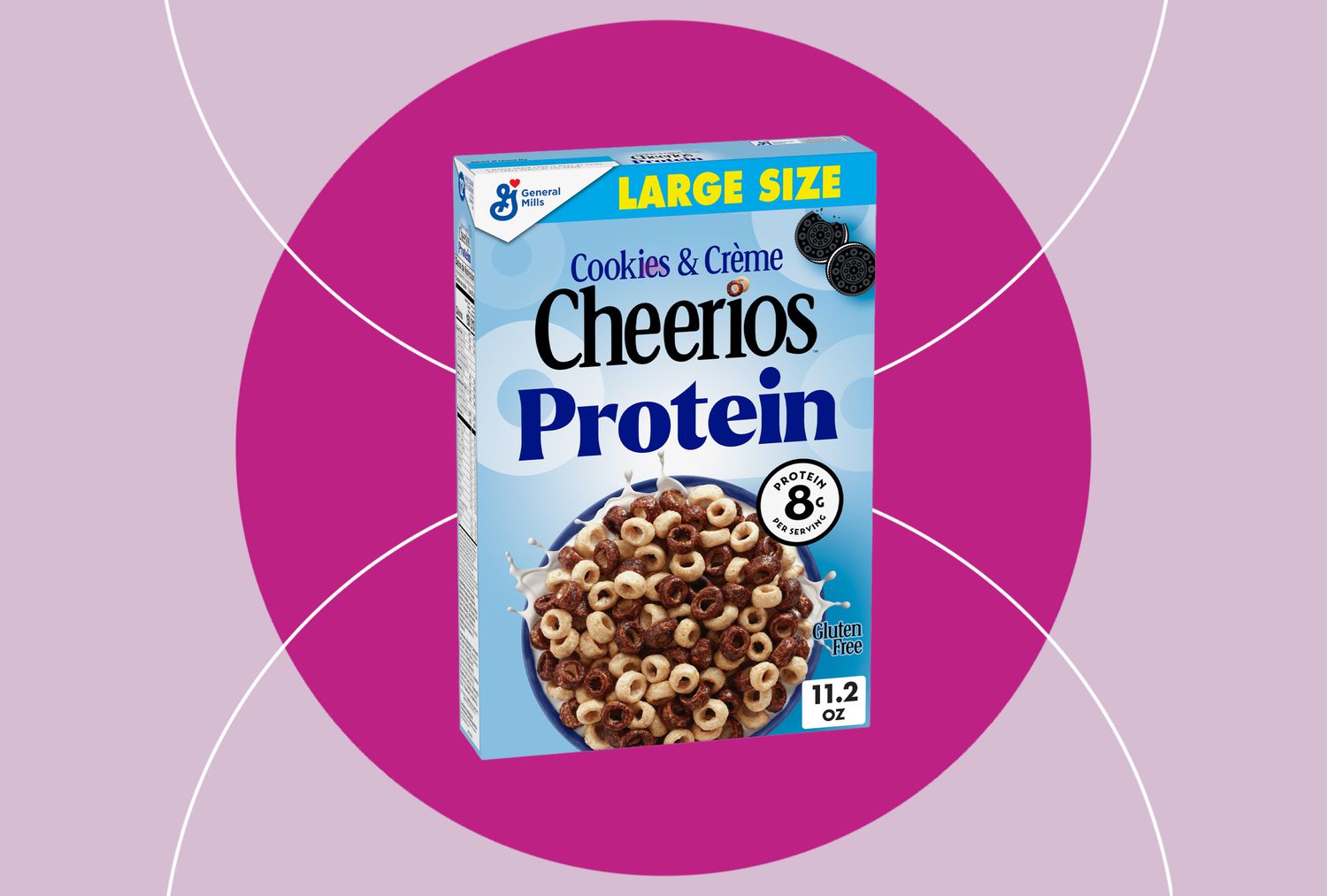
Is Glyphosate in Our Food Supply Causing Cancer? Here’s What The Latest Science Says
Key Takeaways
- Glyphosate is a common herbicide used to kill weeds.
- While some research suggests it might increase cancer risk, more studies on humans are needed for us to know for sure.
- You can reduce your glyphosate exposure from eating produce by washing it and discarding the outer layers.
Since I’m a 16-year veteran health writer, friends often come to me asking about the latest health claims they’ve seen making waves on social media. With the 24-hour news cycle, it’s easy for a single misinterpreted study or claim from a so-called “health expert” to spread far and wide—and cast fear into the hearts of folks just trying to feed themselves and their families.
One of the most common questions I’ve gotten recently has been whether glyphosate—the herbicide used on common food crops to kill weeds—causes cancer. And whether we need to clean out our pantries and refrigerators to remove foods that might be “contaminated” by it. Spurred on by buzzy posts on social media, pals have been worriedly asking, “Should I toss all my Cheerios?” “Are Girl Scout Cookies safe to share with my kids?” “Is my morning oatmeal milk killing me?”
To help bring you the truth, the real truth and nothing but, I dove into the latest research and spoke with doctors and dietitians who are well-versed in the topic.
What Is Glyphosate and How Is It Used?
Glyphosate is a herbicide that was registered for use in the U.S. in 1974. Common glyphosate brands include Roundup, AquaNeat, Eraser and Ranger Pro. This herbicide is typically applied to agricultural fields as well as residential lawns and gardens to kill weeds by blocking an enzyme essential for plant growth. Agriculturally, glyphosate is most often used to treat fields of corn and soybeans, but it’s also sprayed on other crops like beans, legumes and grains, as well as certain fruits (sold whole and in juice form) and some other vegetables, too.
So, how is it that glyphosate is able to kill just the weeds and not the whole plant? Genetic modification is to thank for that. “Roundup-ready” crops, as they’re referred to, are crops that have been genetically modified to be able to withstand treatment from glyphosate. Just 20 years after these GMO crops became available, farmers were using nearly 15 times as much of the herbicide globally. (In 1995, global agricultural use was 112.6 million pounds. By 2014, it was 1.65 billion pounds.) Today, glyphosate is one of the most widely used herbicides in the U.S. While it is used primarily on Roundup-ready soy and corn, non-GMO crops are sometimes sprayed with glyphosate, too—the most common being beans, corn, lentils, millet, peas, potatoes, oats, sugar beets and wheat.
A spike that sudden—and a product so pervasive—might raise some red flags, but Jessica B. Steier, Dr.P.H., PMP, the founder and host of the Unbiased Science podcast, would like to set the record straight: “The reality is that without glyphosate and other pesticides, our food supply would be decimated. We would see lower crop yields, more soil erosion from aggressive tilling, higher food prices and increased food insecurity,” she says. “While it’s always prudent to assess risks, it’s equally important to recognize the benefits these tools provide in modern agriculture.”
What We Thought About Glyphosate and Cancer and What Science Now Says
For decades, all pesticide use has been closely monitored and regulated by the Environmental Protection Agency, the Food and Drug Administration and the Department of Agriculture to ensure food safety for all ages, says Tamika D. Sims, M.S., Ph.D., the Atlanta-based senior director of member and partner engagement for the International Food Information Council. Rest assured that folks are monitoring the situation.
As far as those viral social media videos about Cheerios and cancer (you might recall that oats are among the crops sometimes treated with glyphosate), this is based on a tiny seed of truth. In 2015, the International Agency for Research on Cancer classified glyphosate as “probably carcinogenic to humans,” placing it in the Group 2A category. “This was based on ‘limited’ evidence of cancer in humans (from real-world exposures that actually occurred) and ‘sufficient’ evidence of cancer in experimental animals (from studies of ‘pure’ glyphosate),” the IARC explained at the time.
For reference, substances or exposure circumstances under the Group 2A category, “also includes red meat and working night shifts—meaning it’s based on hazard (potential to cause harm under extreme exposure), not real-world risk,” Steier says.
Basically, what this all means is that while some research shows that glyphosate might increase your cancer risk, more is needed in order for us to know for sure.
In the last decade since IARC’s declaration, “many other agencies, including the European Food Safety Authority and the EPA, have concluded that glyphosate is unlikely to pose a carcinogenic risk to humans,” says Syeda Farid, M.S., RD, LDN, a registered dietitian and board-certified specialist in oncology nutrition at Endeavor Health Swedish Hospital in Chicago.
In fact, in 2020, the EPA concluded its regulatory review of glyphosate, stating that: “there are no risks of concern to human health when glyphosate is used according to the label, and it is not a carcinogen.” Similar conclusions were reached by Health Canada in 2019 and reinforced by a 2023 EFSA fact sheet, Sims says.
Some epidemiological studies, particularly in occupational settings, have suggested a potential association between long-term, high-dose glyphosate exposure (think: farm workers who are spraying Roundup on fields throughout the year) and a type of cancer called non-Hodgkin lymphoma, Steier says. However, “these studies have limitations, including small sample sizes, recall bias and confounding factors (farmers and landscapers are exposed to multiple chemicals), and the largest and most robust studies have not confirmed a causal link,” Steier says. In other words, more research, especially higher-quality studies like randomized controlled trials with significant sample sizes, is needed to show if exposure to high doses of glyphosate can cause this type of cancer.
In fact, a long-term study from the National Cancer Institute followed more than 50,000 licensed pesticide applicators and found no statistically significant link between glyphosate exposure and overall cancer risk. Simple steps like wearing gloves and masks while applying glyphosate can limit potential risk for these workers or those who provide lawn care services.
“For the general public, exposure comes mainly from consuming foods that were once treated with glyphosate,” Farid explains. (This includes corn, soybeans and oil seeds as well as some fruits and vegetables and grains, per the FDA.) “Food only has trace residue of glyphosate, though, all of which is well below safety limits set by the EPA,” she says.
Children tend to play more on grass and have more skin surface area relative to body weight, so they could potentially have a little more skin contact with glyphosate. Also, children tend to eat more processed carbohydrates, like cereal, which may have glyphosate residue, Farid says. Still, CDC guidelines confirm that the effects of glyphosate exposure are expected to be similar in adults and children, and the risk of toxicity for even small children is very low. Plus, any potential absorption through the skin is minimal (less than 2%), according to Farid, making direct skin contact a low-risk exposure route.
But what about runoff from the treated fields? Glyphosate has been shown to be common in samples of streams and rivers, especially within proximity of fields. However, municipalities in America closely track levels and have systems in place to remove as much as possible before that H2O becomes drinking water. Glyphosate is rarely detected in drinking water, and when it is, the level is often well below safe limits.
Dig Deeper
How Much Glyphosate Is Too Much?
Many things can be toxic at extreme levels, even water. So let’s put glyphosate exposure into perspective.
“About 20% to 30% of ingested glyphosate is absorbed into the bloodstream, while the rest passes through the gut unabsorbed and is eliminated in feces,” Farid explains. “Glyphosate is water-soluble, excreted primarily in the urine, and is quickly cleared from the body.” She notes that it can be cleared as quickly as 48 hours after ingestion.
Since urine is the primary way glyphosate leaves the body, urine concentrations of glyphosate are used as a biomarker for exposure. “But detecting glyphosate in urine does not mean it’s harmful,” Steier chimes in. “It simply shows exposure, not toxicity. When someone consumes food treated with glyphosate, the vast majority passes through the body unchanged and is eliminated rapidly. Unlike persistent organic pollutants (like PFAS or heavy metals), glyphosate does not bioaccumulate, which significantly reduces the likelihood of long-term harm.”
Pesticide residues on food are minimal, but advancements in testing technology allow even trace amounts to be detected. Knowledge is power, but detection alone does not mean food is unsafe, Sims notes. The potential harm of any substance depends on the amount consumed.
The EPA sets several safety parameters, including:
- Reference Dose or Acceptable Daily Intake: A level considered safe for lifetime exposure without increased risk of adverse health effects. Steier says this “includes a massive safety buffer,” meaning that using this as the maximum allows for plenty of wiggle room beyond that before something starts getting dangerous.
- Lethal Dose: A level that could be toxic and lead to death.
The EPA has set a reference dose for glyphosate at 1.75 milligrams per kilogram of body weight per day. The lethal dose is 4,900 mg per kg. Translating this into real-world terms, Farid adds that the effects of eating table salt would be fatal at lower levels than the toxic level of glyphosate consumption.
“If we’re considering how much glyphosate-sprayed food someone would need to eat to increase their cancer risk, it’s an unrealistic amount,” Steier says. “The idea that small amounts of glyphosate in cereal pose a meaningful cancer risk is not supported by evidence. A person who weighs 150 pounds would need to eat 10 canisters of oats per day, every day, for the rest of their life to hit the risk threshold determined by the Environmental Working Group (a nonprofit that focuses on research, advocacy and promoting safer practices related to agriculture, environmental chemicals and drinking water). Or if we’re using Cheerios as the reference point, the same individual must eat 82 boxes of cereal per day, every day, to exceed that level.”
What You Can Do to Reduce Your Exposure
Nearly all of us are exposed to glyphosate in our food, and we’ve heard worrying and confusing chatter about this herbicide. Even the Girl Scouts of America had to take this matter to their blog to clear up confusion about glyphosate in their cookies—which drastically affected sales this year. But experts say there’s no need to worry.
“Glyphosate is so ubiquitous that worrying about it won’t really change anything. It is quite difficult to avoid glyphosate unless you grow your own produce and do not use any chemicals at all, which comes with its own challenges, like pests, weeds and decreased yield,” Farid says.
If you’d like to limit your exposure to glyphosate, opt for certified organic foods, which are grown without the use of glyphosate. Organic crops may be subject to a small amount of “drift,” or pesticide dust or droplet transfer, if grown in areas near glyphosate use, however.
Organic or otherwise, you may be able to reduce your exposure to glyphosate in foods with the following strategies, courtesy of Oregon State University’s National Pesticide Information Center. Keep in mind that scientists have yet to discover a strategy that completely removes residues, but the following should help slightly reduce the concentration.
- Wash all fruits and vegetables under running water for 30 seconds, gently scrubbing or rubbing the exterior, even if you’re not planning to eat the skin. Do not use any bleach or soap products.
- Discard the exterior leaves of leafy produce, like cabbage, romaine or iceberg lettuce.
- Peeling produce can also help reduce glyphosate residue, but many nutrients, including fiber, are found there.
As far as your yard goes, if you use a lawn care service or are considering what products to use on the grass in your yard or in your garden, seek out a weed killer made with vinegar (acetic acid), iron (FeHEDTA) or another natural active ingredient. Wear gloves, goggles and a mask if you do choose to apply glyphosate to your lawn.
Keep in mind that “if you’re truly worried about cancer, the best things you can do are exercise regularly, eat balanced meals with lean protein and lots of fruits and veggies, avoid processed meats, maintain a healthy weight, drink lots of water, sleep well and limit alcohol and drugs,” Farid says.
The Bottom Line
Glyphosate is essentially inescapable in modern society, true. That said, exposure to glyphosate residue in foods at levels any human could consume appears to be perfectly safe. There may be a slight increase in health risks for people who work with and near the herbicide daily, but more research is required to confirm any causal link.
“For the general public consuming trace amounts in food, the risk is negligible. The most comprehensive regulatory reviews—including those by the EPA and the WHO—conclude that glyphosate is unlikely to pose a cancer risk at real-world exposure levels,” Steier says.
Steier warns that misinformation can quickly and easily distort public perception of food safety. The truth is that “fear-based narratives around pesticides can lead to poor policy decisions, harming food security, increasing costs and making safe, affordable food less accessible,” Steier continues.
It can be tempting to fixate on one specific risk factor, whether it’s glyphosate, artificial sweeteners or seed oils. Yet, a healthy lifestyle is built upon a foundation of overall habits, not avoiding one particular thing. To reduce your risk for cancer and increase your health span in science-backed ways, eat a colorful, varied diet rich in fruits, vegetables, nuts, seeds and legumes, avoid smoking and alcohol, move your body and prioritize sleep and stress-relieving activities.










